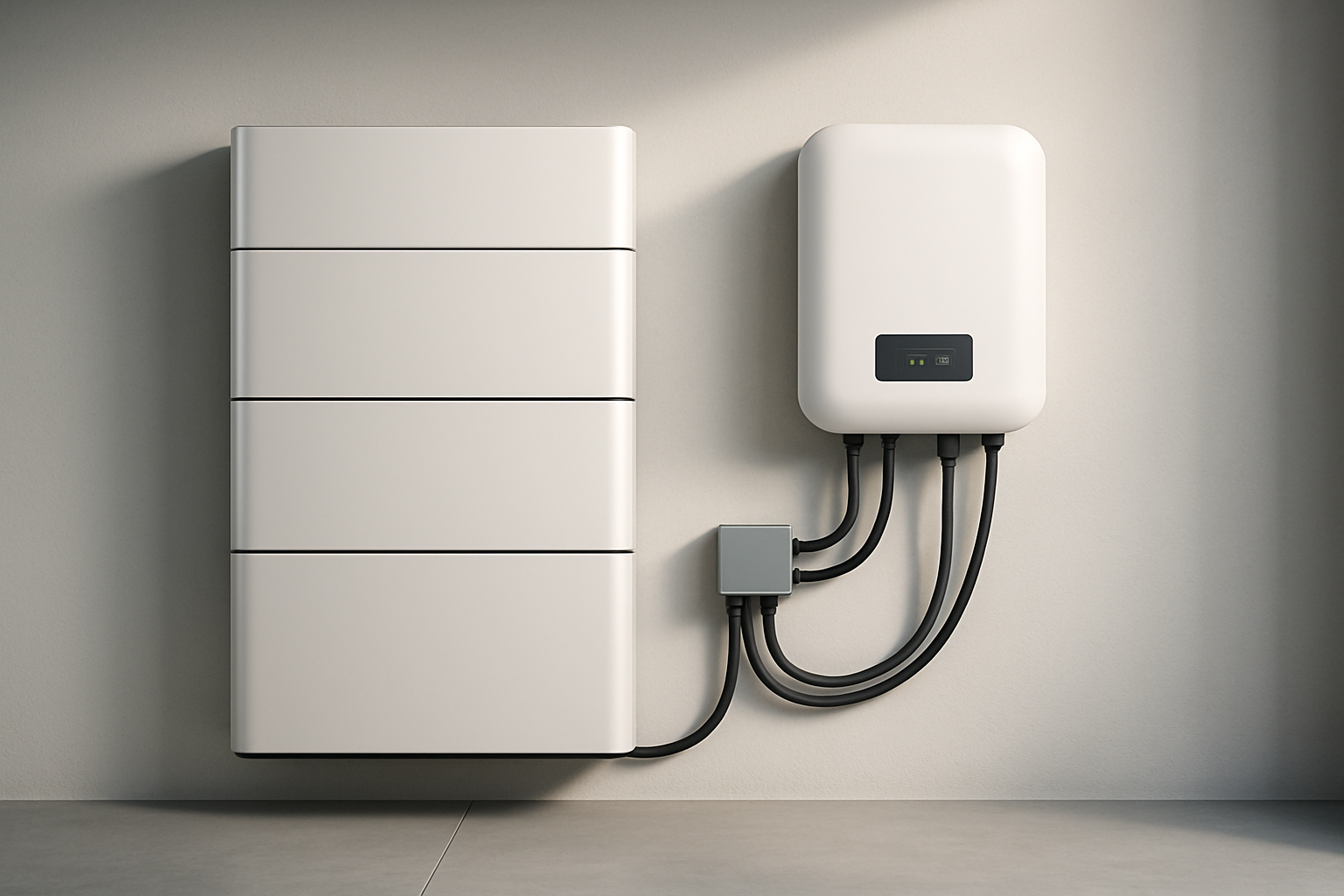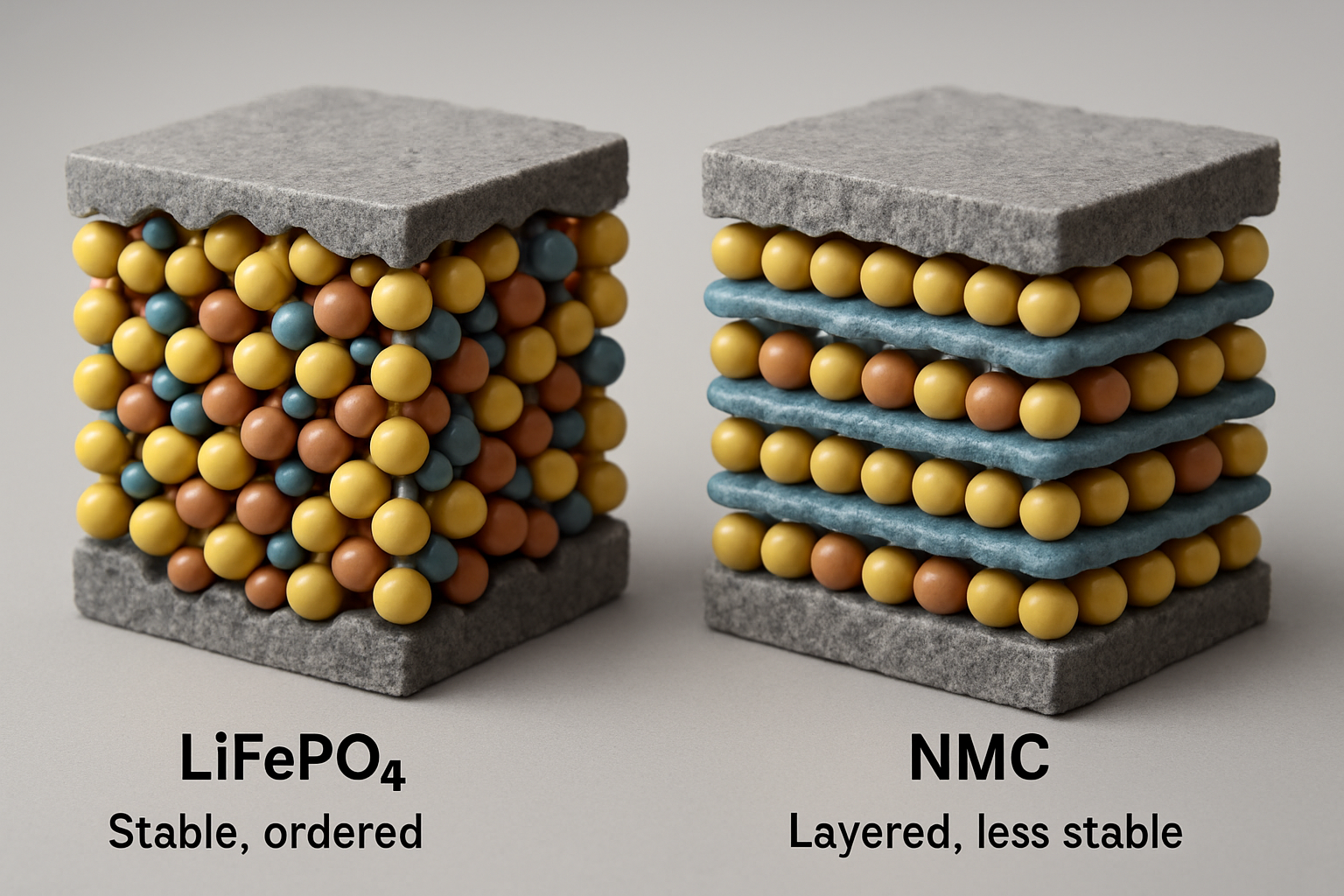The growing demand for reliable energy storage has placed battery safety under intense scrutiny. For homeowners and businesses investing in solar power and backup systems, the question of safety is not just a technical detail—it’s a fundamental requirement. Among the various lithium-ion technologies, LiFePO4 (Lithium Iron Phosphate) is consistently highlighted as the safest option. This article examines the core reasons behind this reputation, focusing on the chemical, thermal, and physical properties that set LiFePO4 apart.
The Core of Safety: Chemical and Structural Stability
A battery's safety profile begins at the molecular level. The inherent stability of its chemical structure determines how it will react under stress, such as high temperatures or overcharging. LiFePO4 chemistry possesses unique characteristics that make it exceptionally robust compared to other common lithium-ion chemistries like Nickel Manganese Cobalt (NMC) or Lithium Cobalt Oxide (LCO).
The Strength of the Phosphate Bond
The foundation of LiFePO4's safety is its strong crystal structure. The cathode material uses a powerful covalent bond between its phosphorus and oxygen atoms (P-O). This bond is significantly more stable than the metal-oxide bonds found in other lithium chemistries. A key benefit of this stability is its resistance to releasing oxygen, even at high temperatures. Oxygen release is a dangerous catalyst in battery failures, as it can fuel a thermal runaway event. By keeping oxygen locked within its structure, LiFePO4 chemistry mitigates a primary fire risk.
How Structure Prevents Collapse
LiFePO4 batteries feature a three-dimensional olivine crystal structure that is remarkably resilient. This framework can withstand significant stress during rapid charging and discharging without degrading or collapsing. In contrast, the layered oxide structures of LCO and NMC batteries are more susceptible to structural changes over time, which can lead to internal short circuits. The robust nature of the iron phosphate cathode contributes to both the safety and the exceptional cycle life of LiFePO4 batteries, which can often exceed 5,000 cycles.
Thermal Runaway: The Ultimate Test for a Battery
Thermal runaway is the most critical safety concern for any high-energy battery. It is an uncontrollable self-heating process where rising temperatures trigger a chain reaction of chemical breakdowns, releasing more heat and potentially leading to fire or explosion. LiFePO4's chemistry is inherently less prone to this dangerous phenomenon.
High Thermal Decomposition Temperature
A key safety metric is the temperature at which a battery's chemistry begins to break down uncontrollably. LiFePO4 has a significantly higher thermal runaway threshold, starting at around 270°C (518°F). This provides a much wider safety margin compared to NMC batteries, which can become unstable at approximately 210°C (410°F), and LCO batteries, which have an even lower threshold of around 150°C (302°F). This superior thermal stability means LiFePO4 batteries can operate safely in a wider range of temperatures and are less likely to overheat under heavy loads.
Low Heat Generation During Operation
Efficiency also plays a role in safety. LiFePO4 batteries have lower internal resistance, which means less energy is wasted as heat during charging and discharging. This not only improves overall efficiency but also keeps the battery cooler during operation. Lower operating temperatures reduce stress on the components and minimize the risk of heat-related degradation over the battery's lifespan.
Beyond the Spec Sheet: Performance Under Stress
Technical specifications are important, but a battery's true safety is proven by its ability to tolerate real-world abuse and misuse. LiFePO4 chemistry demonstrates superior resilience in hazardous scenarios such as overcharging, short-circuiting, and physical damage.
Overcharging and Short-Circuiting Scenarios
LiFePO4 batteries are more tolerant of overcharging than other lithium-ion types. Their stable structure resists the formation of lithium dendrites—metallic structures that can cause internal short circuits. Even in the event of a short circuit, the chemistry is less likely to result in a fire or explosion. While no battery is immune to damage from severe electrical abuse, LiFePO4's response is far less volatile.
The Role of the Battery Management System (BMS)
It is important to recognize that a high-quality Battery Management System (BMS) is a vital safety component in any modern lithium battery pack. The BMS is responsible for monitoring cell voltage, current, and temperature, protecting against overcharging, over-discharging, and short circuits. While the BMS is critical, the inherent safety of the LiFePO4 chemistry provides a much larger margin of error, making the entire system more robust and reliable.
A Practical Comparison: LiFePO4 vs. Other Lithium Chemistries
When selecting a battery for a deep cycle application like a home energy storage system, it's crucial to weigh the trade-offs between different chemistries. While some chemistries offer higher energy density, LiFePO4 prioritizes safety, longevity, and stability.
| Feature | LiFePO4 (Lithium Iron Phosphate) | NMC (Nickel Manganese Cobalt) | LCO (Lithium Cobalt Oxide) |
|---|---|---|---|
| Safety Profile | Excellent | Good | Fair |
| Thermal Runaway Temp. | ~270°C | ~210°C | ~150°C |
| Lifespan (Cycles) | 3,000 - 10,000+ | 1,000 - 2,000 | 500 - 1,000 |
| Energy Density | Good (Lower) | Excellent (Higher) | Very Good (High) |
| Primary Application | Stationary Storage, Commercial EVs | EVs, Power Tools, Laptops | Consumer Electronics |
Why Energy Density Isn't Everything
NMC and LCO batteries offer higher energy density, meaning they can store more energy in a smaller, lighter package. This makes them ideal for portable electronics and some electric vehicles where space and weight are primary concerns. However, this higher energy density comes at the cost of reduced thermal stability and a shorter cycle life. For stationary applications like a solar energy storage system, where long-term reliability and safety are paramount, the trade-off for higher safety and a longer lifespan is a clear advantage. As detailed in an ultimate reference on solar storage performance, metrics like cycle life and depth of discharge are far more critical for achieving long-term value and energy independence.
The Verdict: A Balanced Perspective on Battery Safety
While no battery technology is entirely without risk, the evidence strongly supports the conclusion that LiFePO4 is the safest commercially available deep cycle lithium battery chemistry. Its safety is not the result of a single feature but a combination of factors: a highly stable chemical structure, a superior thermal runaway threshold, and excellent tolerance to abuse. As the International Energy Agency (IEA) notes, the demand for battery storage is growing rapidly, making the adoption of safe and reliable technologies more critical than ever. For applications where safety cannot be compromised, such as in homes and businesses, the robust and forgiving nature of Lithium Iron Phosphate technology makes it a standout choice.
Frequently Asked Questions
Are LiFePO4 batteries completely safe?
No battery is 100% immune to failure. However, LiFePO4 batteries have the safest chemistry among mainstream lithium-ion types. Their stability drastically reduces the risks of fire or explosion that are more prevalent in other chemistries, especially when combined with a quality Battery Management System (BMS).
Do LiFePO4 batteries require a special charger?
Yes, it is highly recommended to use a charger specifically designed for LiFePO4 chemistry. These chargers use the correct voltage and charging algorithms to optimize the battery's performance and lifespan while ensuring safety. Using an incompatible charger, such as one for lead-acid batteries, can lead to damage and potential safety risks.
Can LiFePO4 batteries be used in cold weather?
LiFePO4 batteries can operate in cold temperatures, but their performance, particularly charging, can be affected. Many modern LiFePO4 batteries include a low-temperature cutoff feature in their BMS to prevent charging below 0°C (32°F), which can damage the cells. Some premium models even have built-in heating elements for reliable cold-weather operation.





Leave a comment
All comments are moderated before being published.
This site is protected by hCaptcha and the hCaptcha Privacy Policy and Terms of Service apply.